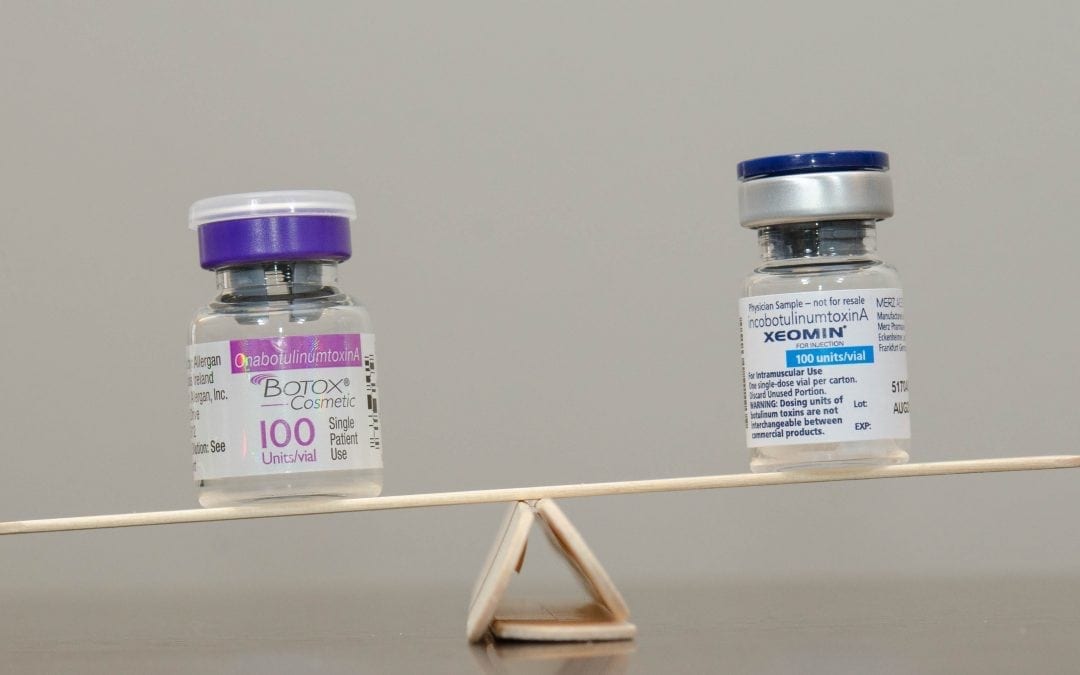Login Form
Registration
Profile Informations
Login Datas
or login
Xeomin vs Botox: A Comprehensive Guide for First-Time Users
Xeomin vs Botox: A Comprehensive Guide for First-Time Users
Are you considering anti-wrinkle treatments but feeling overwhelmed by the options? When comparing Xeomin vs Botox, first-time users often wonder which neurotoxin injection will deliver the best results for their unique needs. This comprehensive guide will explore the similarities and differences between these popular treatments, helping you make an informed decision about whether Botox vs Xeomin is right for you.
In recent years, non-surgical aesthetic treatments have experienced explosive growth, with neurotoxin injectables leading the way. According to recent statistics, millions of these procedures are performed annually, reflecting their effectiveness and reliability. Both Xeomin and Botox have emerged as frontrunners in the battle against dynamic wrinkles, offering temporary yet impactful solutions for those seeking a more youthful appearance without surgery.
Facial lines that form from repeated muscle movements—like frowning, squinting, or raising eyebrows—respond exceptionally well to neurotoxin treatments. These injectables work by temporarily relaxing specific facial muscles, smoothing the overlying skin and reducing the appearance of wrinkles. For first-time users wondering about Xeomin or Botox, understanding the science behind these treatments is the first step toward making the right choice.

While they share the same primary goal, Xeomin and Botox have distinct characteristics that may make one more suitable than the other depending on your specific situation. As a first-time user, knowing these differences can help you communicate effectively with your provider and achieve optimal results from your treatment.
The Science Behind Xeomin and Botox
Composition Differences
The most significant difference when comparing Xeomin vs Botox lies in their formulation. Xeomin (incobotulinumtoxinA) is often referred to as a "naked" neurotoxin because it contains only the therapeutic component—pure botulinum toxin type A—without accessory proteins. In contrast, Botox (onabotulinumtoxinA) includes complexing proteins along with the active neurotoxin. This distinction makes Xeomin potentially less likely to cause resistance in patients over time, as the body has fewer foreign components to potentially develop antibodies against.
Many patients wonder, "Is Xeomin better than Botox?" regarding this composition difference. For those with sensitivity to protein complexes or patients who have developed resistance to Botox after repeated treatments, Xeomin might offer advantages. However, both formulations have proven highly effective in clinical settings, with similar safety profiles.
How They Work
Both Botox vs Xeomin work through the same fundamental mechanism: they block the release of acetylcholine, a neurotransmitter responsible for muscle contractions. When injected into specific facial muscles, these neurotoxins temporarily prevent nerve signals from reaching the muscle, resulting in reduced muscle activity and smoother skin in the treated area.
The most commonly targeted areas include the glabellar region (between the eyebrows), horizontal forehead lines, and crow's feet around the eyes. The temporary muscle relaxation typically lasts 3-4 months before the nerve signals gradually resume normal function. This temporary nature makes both treatments excellent options for those new to aesthetic procedures, as the effects will naturally reverse if you decide not to continue.
FDA-Approved Treatment Areas
When considering Xeomin or Botox, it's important to understand their FDA-approved uses. Botox received FDA approval for cosmetic use in 2002, with indications for glabellar lines, forehead lines, and crow's feet. Xeomin gained FDA approval in 2010 specifically for glabellar lines, though it's commonly used off-label for other facial areas.
Both products are also approved for various medical conditions, including chronic migraine, excessive sweating, and certain muscle spasticity disorders. This dual cosmetic and therapeutic use speaks to the versatility and safety of both neurotoxins when administered by qualified professionals.
Practical Considerations for First-Time Users

Onset and Duration of Results
A common question in the Xeomin vs Botox debate concerns how quickly results appear and how long they last. Xeomin may have a slight advantage in onset time, with some patients noticing results as early as 1-3 days after treatment, compared to Botox's typical 3-7 day onset. However, individual experiences vary widely.
Both neurotoxins typically provide results lasting 3-4 months, though this can be influenced by several factors:
- Your metabolism rate
- The specific area treated
- The dosage administered
- Your history with neurotoxin treatments
First-time users often notice that subsequent treatments may last longer as the muscles become more conditioned to reduced activity.
Potential Side Effects and Safety Profile
When comparing Botox vs Xeomin safety profiles, both have similar potential side effects, most of which are mild and temporary. These may include:
- Injection site bruising or redness
- Mild headache
- Temporary eyelid drooping (rare when administered correctly)
- Flu-like symptoms (uncommon)
One potential advantage of Xeomin for some patients lies in its "naked" formulation. Patients who have developed antibodies to the complexing proteins in Botox may find that Xeomin is better than Botox for their specific situation, as it may be less likely to trigger an immune response.
Both products have excellent safety records when administered by qualified professionals, with millions of successful treatments performed worldwide. The key to minimizing risks lies in choosing an experienced provider who understands proper injection techniques and appropriate dosing.
Cost Considerations and Treatment Frequency
The cost of Xeomin or Botox treatments depends on several factors, including:
- Geographic location
- Provider expertise
- Number of units required
- Number of treatment areas
Generally, Xeomin may be slightly less expensive per unit than Botox, though the total cost will depend on your specific treatment plan. Most providers charge by unit, with treatments typically requiring 20-40 units depending on the areas being addressed.
For optimal results, most practitioners recommend maintenance treatments every 3-4 months. Some patients find they can extend this interval to 4-6 months after several consistent treatment cycles as muscles become more responsive.
Making the Right Choice: Xeomin or Botox?

Who Might Prefer Xeomin
When deciding between Xeomin vs Botox, certain factors might make Xeomin the preferred choice:
- If you've previously developed resistance to Botox
- If you're concerned about developing antibodies with long-term use
- If you prefer a potentially faster onset of results
- If you're sensitive to protein complexes in other neurotoxins
Patients who question "Is Xeomin better than Botox?" often find that its purified formulation offers advantages for their specific concerns, particularly if they plan on long-term maintenance treatments.
Who Might Prefer Botox
Botox might be the preferred option in the Botox vs Xeomin comparison for patients who:
- Value the extensive track record and brand recognition
- Are seeking treatment for multiple FDA-approved areas in one session
- Have previously experienced good results with Botox
- Prefer the most widely-studied neurotoxin option
Many first-time users gravitate toward Botox due to its established reputation and widespread use, which can provide additional peace of mind.
The Importance of Provider Selection
Regardless of whether you choose Xeomin or Botox, selecting a qualified provider is critical to your treatment success. A skilled professional will:
- Evaluate your facial anatomy and movement patterns
- Recommend the appropriate product and dosage
- Use precise injection techniques to achieve natural-looking results
- Provide comprehensive aftercare instructions
A provider who sources authentic, high-quality injectable products will ensure the highest standards of safety and efficacy. This commitment to quality helps professionals deliver exceptional results to their patients, whether using Xeomin or Botox.
Final Thoughts
The question of "Is Xeomin better than Botox?" ultimately depends on your individual factors. A personalized consultation with a qualified provider will help determine which product aligns best with your aesthetic goals, facial anatomy, and medical history.
First-time users should come prepared with questions about expected results, potential side effects, and maintenance recommendations. This open communication helps ensure you receive a treatment plan tailored to your unique needs.
If you're a first-time user trying to decide between Botox vs Xeomin, consult with a qualified professional who can evaluate your specific needs and recommend the most appropriate treatment. Finding a provider who uses premium, authentic products is essential for achieving safe, consistent results.
Share this article with friends or colleagues considering neurotoxin treatments, and join the conversation by commenting on your experiences with either Xeomin or Botox. Your journey to smoother, more youthful skin starts with being informed about all your options.


